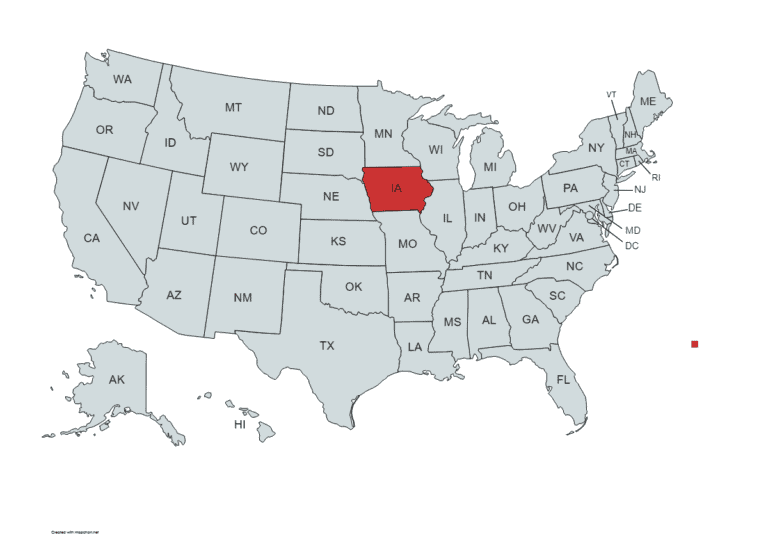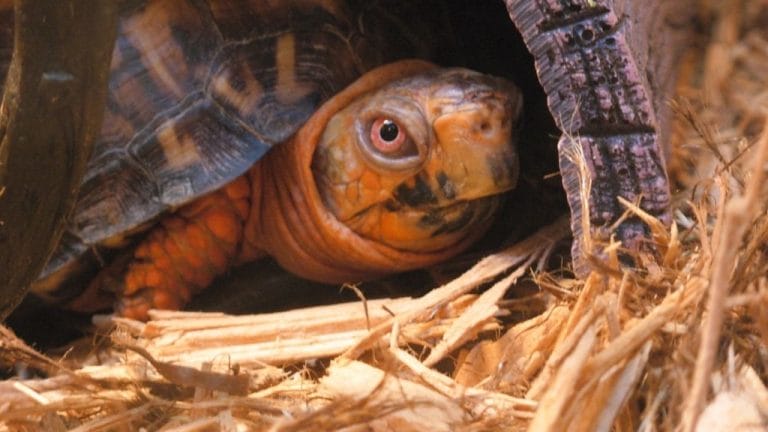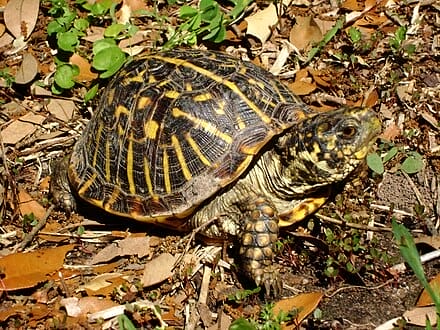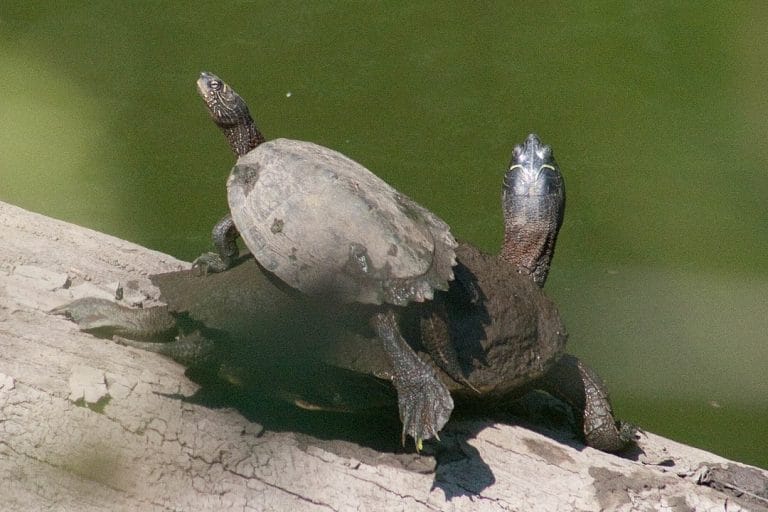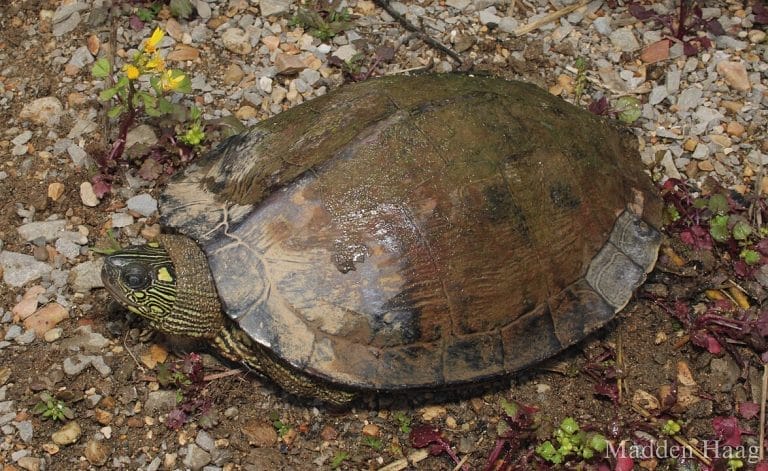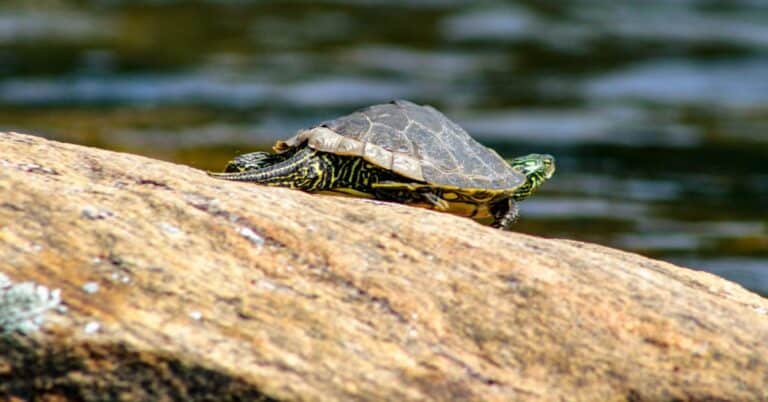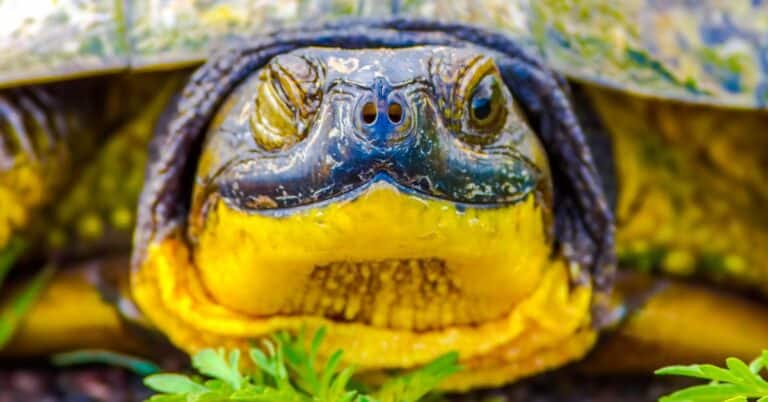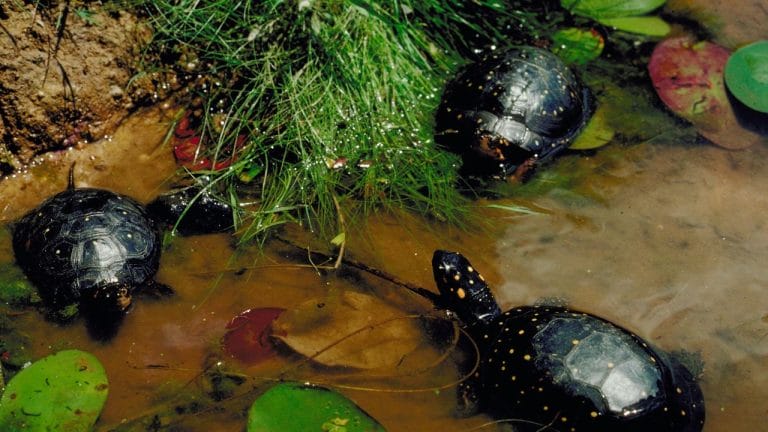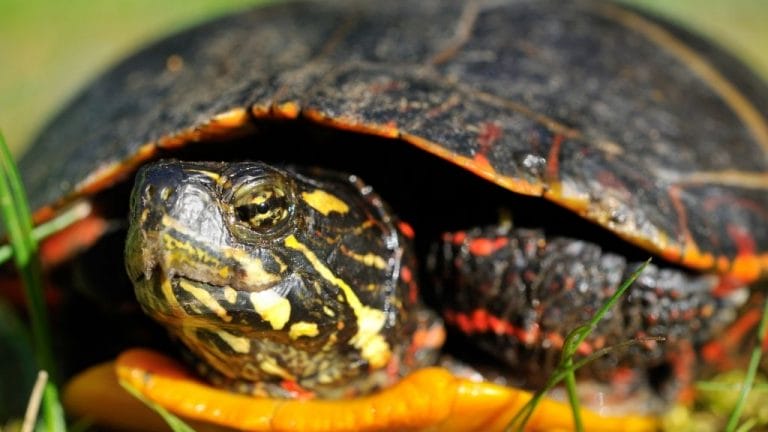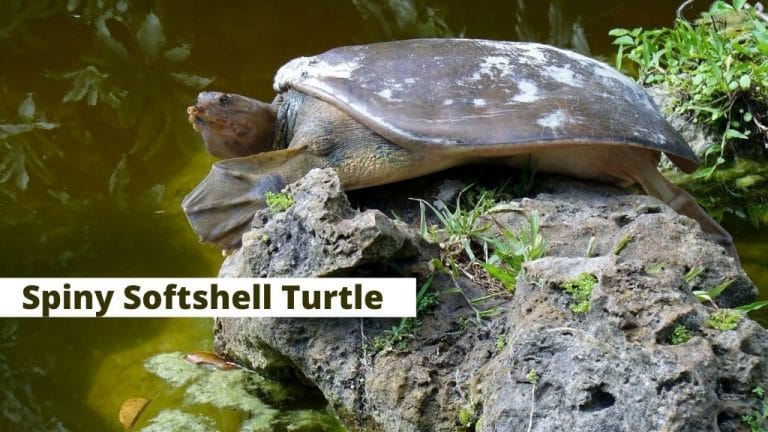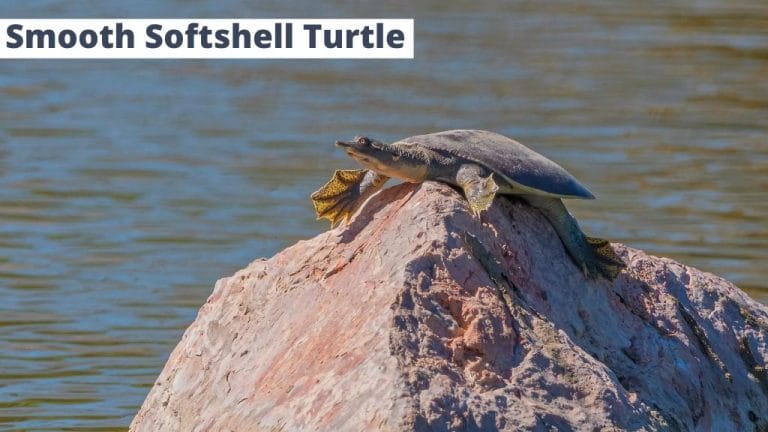Native Turtles In Iowa
Home > Native Turtle Database > USA > Native Turtles In Iowa
Native Turtle Species Map – Find Turtles by Region
-
Terrapene carolina carolina (Eastern Box Turtle)
The Eastern Box Turtle (Terrapene carolina carolina) is a small, terrestrial turtle known for its high-domed shell and ability to close itself completely using a hinged plastron. Native to the eastern United States, it is a long-lived species often found in forests and grasslands, where it thrives in humid environments. Scientific Classification Kingdom: AnimaliaPhylum: ChordataClass:…
-
Terrapene ornata (Ornate Box Turtle)
Terrapene ornata, commonly known as the ornate box turtle, is a small, terrestrial turtle native to North America. Recognized for its striking yellow and black patterned shell, this species is well-adapted to dry grasslands and prairies, where it spends much of its life burrowed underground. Scientific Classification Kingdom: AnimaliaPhylum: ChordataClass: ReptiliaOrder: TestudinesFamily: EmydidaeGenus: TerrapeneSpecies: T….
-
Terrapene carolina (Common Box Turtle)
Terrapene carolina, commonly known as the Common Box Turtle, is a terrestrial species native to North America. Recognized for its domed shell and hinged plastron, it can completely close itself inside for protection. This turtle is known for its long lifespan, sometimes exceeding 100 years. Scientific Classification Kingdom: AnimaliaPhylum: ChordataClass: ReptiliaOrder: TestudinesFamily: EmydidaeGenus: TerrapeneSpecies: T….
-
Kinosternon flavescens (Yellow Mud Turtle)
Kinosternon flavescens, commonly known as the Yellow Mud Turtle, is a small freshwater turtle known for its adaptability to both aquatic and terrestrial environments. This species is native to North America and has a distinctive olive to yellowish coloration. Scientific Classification Kingdom: AnimaliaPhylum: ChordataClass: ReptiliaOrder: TestudinesFamily: KinosternidaeGenus: KinosternonSpecies: K. flavescens Common Names Yellow Mud TurtleYellow-necked…
-
Graptemys pseudogeographica (False Map Turtle)
The False Map Turtle (Graptemys pseudogeographica) is a freshwater turtle species native to North America. Renowned for the intricate, map-like patterns on its shell, this turtle plays a vital role in its aquatic ecosystems. Its unique appearance and behaviors make it a subject of interest for both researchers and reptile enthusiasts. Scientific Classification Common Names…
-
Graptemys ouachitensis (Ouachita Map Turtle)
The Ouachita Map Turtle (Graptemys ouachitensis) is a freshwater turtle native to the central United States. Recognizable by the intricate, map-like patterns on its shell and distinctive yellow markings, this species thrives in rivers and streams with abundant basking sites. Scientific Classification Common Names Identification Description The Ouachita Map Turtle features a keeled carapace with…
-
Graptemys geographica (Common Map Turtle)
Graptemys geographica, commonly known as the Common Map Turtle, is a freshwater turtle species native to North America. Renowned for the intricate, map-like patterns on its shell, this turtle is a captivating inhabitant of rivers and streams across the eastern United States and southeastern Canada. Scientific Classification Common Names Identification Description The Common Map Turtle…
-
Emydoidea blandingii (Blanding’s Turtle)
Emydoidea blandingii is a semi-aquatic freshwater turtle species known for its distinctive yellow chin and throat and its domed carapace. This species is primarily found in the Great Lakes region of North America and is notable for its long lifespan and preference for shallow water habitats. Scientific Classification Common Names Identification Description Blanding’s Turtle has…
-
Chelydra serpentina (Common Snapping Turtle)
Chelydra serpentina, commonly known as the common snapping turtle, is a large freshwater turtle native to North America. This species is known for its powerful jaws and aggressive behavior when out of the water, although it prefers to avoid confrontation in its natural habitat. Scientific Classification Common Names Identification Description The common snapping turtle has…
-
Clemmys guttata (Spotted Turtle)
Clemmys guttata, commonly known as the spotted turtle, is a small, semi-aquatic turtle that is easily recognizable by its distinctive yellow spots against a dark carapace. This species is known for its gentle disposition and striking appearance. Scientific Classification Common Names Identification Native Origin and Distribution Preferred Habitat Spotted turtles prefer shallow, muddy-bottomed water bodies…
-
Chrysemys picta (Painted Turtle)
Chrysemys Picta, commonly known as the painted turtle, is renowned for its strikingly colorful markings on its extremities, neck, and shell. These turtles are small to medium in size and are one of the most widely distributed turtle species in North America. Scientific Classification Common Names Identification Native Origin and Distribution Preferred Habitat Painted turtles…
-
Apalone spinifera (Spiny softshell turtle)
Apalone spinifera, commonly known as the spiny softshell turtle, is a unique species of softshell turtle that is notable for its leathery carapace and spiny projections along the front edge. This turtle is adapted to a life predominantly in water, displaying a streamlined body for efficient swimming. Scientific Classification Common Names Identification Description Apalone spinifera…
-
Apalone mutica (Smooth softshell turtle)
Apalone mutica, commonly known as the smooth softshell turtle, is a species of softshell turtle in the family Trionychidae. It is characterized by its smooth, leathery shell and snorkel-like nose, which are adaptations for its aquatic lifestyle. Scientific Classification Common Names Identification Description Smooth softshell turtles have a flat, round, leathery carapace that lacks scutes…
Warning: You Might Spend Hours Here
I’ve built the ultimate turtle and tortoise species database. This isn’t your average turtle list. Filter by genus, conservation status, and more. How many species? Which are endangered? What’s the tiniest one? It’s all there.

